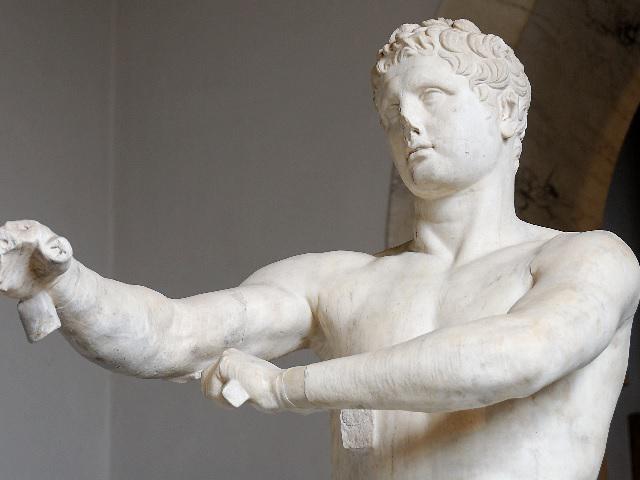Vatican Museums
Don't miss anything
Apoxyomenos
Apoxiomeno in its Greek name, but for many others this is simply the "Scraper". Today clearly missing pieces to this work, but if all the details were we could see one of the traditional and favorite themes of the sculpture of Ancient Greece, which represents a young athlete surprised wiping himself with a scraper the dust, sweat and ointment of his body with the small curved instrument that the Romans called strigil.
There are several Apoxiomenos that have been discovered in the world, each with different variations. The one they are observing, the Apoxyomenos de Lisipo, is the only whole copy of this type. Most art historians maintain that it is a copy of another lost bronze statue of ancient Greece made by Lysippus in the fourth century BC.
It was discovered in 1849 in the Roman quarter of Trastevere, and the following year the German archaeologist August Braun recognized in the statue that copy of a Lisipo bronze cited by Pliny the Elder in his Historia Natural. According to Pliny, Emperor Tibero himself would have had her transported to his room.
Observing the statue impresses us its dimension. It measures 2.05 meters high. He has undergone several restorations, some of which have been destroyed, but the one that remains is mainly that of one of his hands. We invite you to turn around observing the work. It is a work to be seen in a circular way, having a different impression from each angle. It also uses the contraposto, the technique that invites movement. If they are fixed, the statue is supported on one leg, while the other is displaced to one side, receiving part of the weight.




